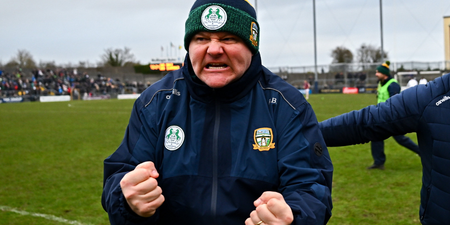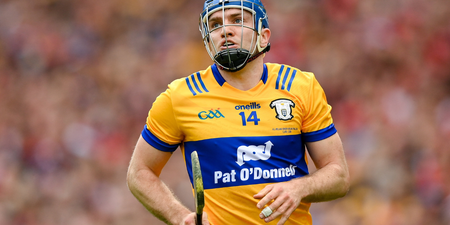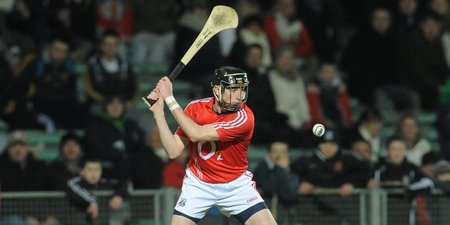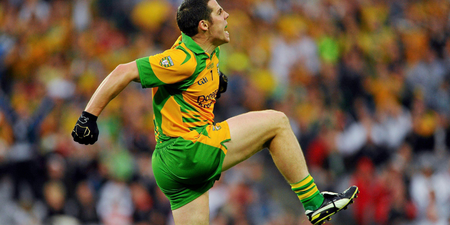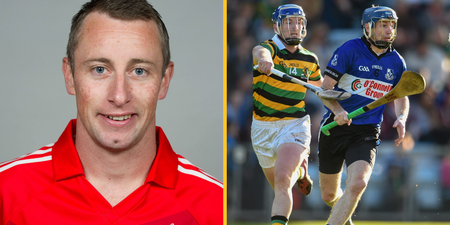By now, if you’ve been reading my stats articles you’ll have seen how playing short kick-outs to the full back line isn’t generally a great idea.
Most sides are more likely to concede a score on the first turnover than they are to score off the initial possession on the kick-out, unless the kick-out is hit quickly (see article).
Hence many sides have come to place a higher value on maintaining a sitting sweeper than going man-on-man on the opposition kick-out, which frequently allows the opposition the opportunity to play that short kick-out.
By my take, the comprehension of this very concept is probably the most key piece of statistical/tactical developments in modern football.
Renowned statistician @somearagaa breaks down the evolution of the kickout https://t.co/Mer6UXBAoz
— SportsJOE (@SportsJOEdotie) December 4, 2017
Why? Because if you understand the implications from kick-outs, you can manipulate circumstances in general play to your statistical favour – circumstances which the opposition are unlikely to understand from a statistical point of view. Hence you can gain an edge.
The reason why the short kick-out to the full back line isn’t generally profitable isn’t rocket science. You play the ball to your full back line with fourteen or fifteen opponents behind the ball. It requires a lot of football ability to break this down and can leave your side widely open for a counter-attack so most sides concede more than they score off these short kick-outs – when they’re not played quickly.
Indeed, here we have a bizarre, yet interesting concept – your side may, actually, stand a higher chance of scoring if the other side have the ball, in certain circumstances!
Surely, giving the ball away deliberately sounds like sheer lunacy? Maybe it is.
But what if you weren’t “giving it away” per se? What if you were taking what snooker players call a “shot to nothing” – a shot where you can go for it, but still know that there will be no serious repercussions if you miss?
Did Carlow really expose Dublin's biggest weakness for the whole country to see? | SportsJOE.ie https://t.co/JM8WUOJRsN
— SportsJOE (@SportsJOEdotie) June 5, 2017
There is one situation which arises time and again in Gaelic football where this “shot to nothing” almost definitely represents the best/increased chance of scoring next.
When your side has the ball in and around their own half back line area with a pack of maybe seven or eight opponents in the middle third, in most cases, you’re still probably more likely to concede a score on the turnover than you are to score from your current possession. That assumes that the opposition have a comfortable defensive shape at that moment, and that you’re not a Dublin or Kerry or a Slaughtneil or St. Vincent’s.
But what if you could turn the tables?
Undoubtedly, one of the most over-used and under-thought plays in Gaelic football is a long ball into an outnumbered full forward. The chances of the full forward winning it cleanly and getting a clean shot off are generally very slim. Typically, you’re only kicking the ball away.
What, however, if you look up from the half back line, see a crowded midfield and see, let’s say three opposition defenders on three of your forwards up front, the far side of that condensed middle?
By going over the top you give your side the chance to win the ball man-on-man and attack into a man-on-man defence.
On average, teams score roughly two times more when attacking man-on-man as opposed to into a “blanket defence”.
Even if you lose possession on the long ball, however, you’re probably at in and around a neutral point of expectancy for getting the next score.
By sending the ball the other side of their middle third, you’ve essentially created the same circumstances as though they’ve played a slow kick-out to the full back line – and all figures show that this makes them more likely to concede the next score on the turnover than on their own possession.

There is some slightly complicated maths which render a seemingly mathematically logical option of simply kicking the ball away, over the top of the middle third, in this position, as incorrect (though not as crazy it may seem).
However, when you calculate the chance of scoring off the initial long ball, assuming you have close to a fifty/fifty chance of winning it to begin with, it becomes a statistical/tactical “no-brainer”.
The long ball option, as opposed to trying to weave through the middle third and risking the turnover and counter-attack for the opposition, results in a significantly higher chance of getting the next score.
Not convinced? There are some more complex mathematical equations which can prove this in more in-depth terms, but without going into these and what a poker player calls “implied odds”, let’s put some straight forward figures on this.
Basically, as our kick-out statistics illustrate, most sides are more likely to concede on the first turnover on a short kick-out if it allows the opposition to set up with eleven or more men behind the ball.
The long ball over the top basically replicates this situation if you lose the long ball. So, a worst case scenario sees you put your side in a neutral position, at its worst (against most sides).
Add on the 50 percent chance of winning the long ball divided by no less than a fifty percent chance of gaining a score if you do, and you’ve just given your side a 25 percent plus possibility of scoring off the long ball.
This 25 percent is basically a pure statistical edge in the expectancy of the next score (minus a small percentage accounted for with more complex maths relating to odds of a score on the opposition’s potential second, third possession etc, which brings it to around a 16-19 percent edge).
If it sounds like a re-invention of the wheel, it’s not. It was working off the same statistical premise that Dave Basset’s Wimbledon, Graham Taylor’s Watford and Aston Villa and Jack Charlton’s Ireland made leaps and bounds with in soccer in the 80’s and 90’s.

The early days of soccer stats illustrated that over half of goal concessions came off the back of losing possession on the middle third.
Conclusion? Kick it over that middle third and you eliminate that risk. It wasn’t pretty, but it sure was effective.
While soccer culture bemoans the long ball, ironically, the same strategy holds a place in the hearts and minds of large sections of the GAA fraternity.
Used at the wrong time, it’s Gaelic football suicide. Used at the right time, it can give huge statistical edges.
Just ask Carlow. Though the principal was generally put into practice on kick-outs, not so much open play, by condensing their own half and kicking kick-outs over the top of eleven/twelve of their own players, they essentially implemented this principal throughout 2017.
To the bemusement of many analysts, they jumped to 25th on the GAA adapted ELO system while applying this principal in 2017 with an increase of 17 percentage points – the highest made by any county in 2017.
It’s a statistical and tactical edge that’s crying out for others to take advantage of.
Stephen O’Meara supported the Galway hurling performance analysis team in 2017 and is the creator of GaaProStats, statistical and video analysis software designed specifically for Gaelic football and hurling.












